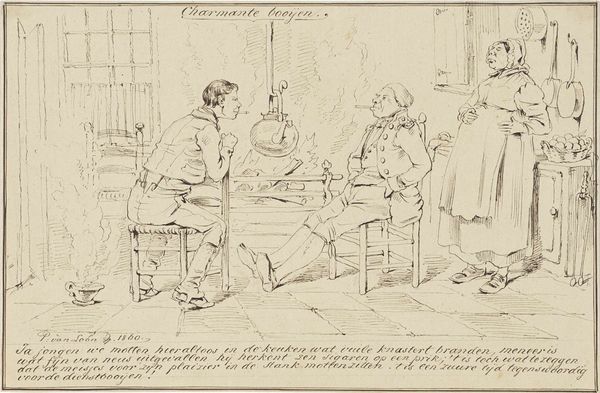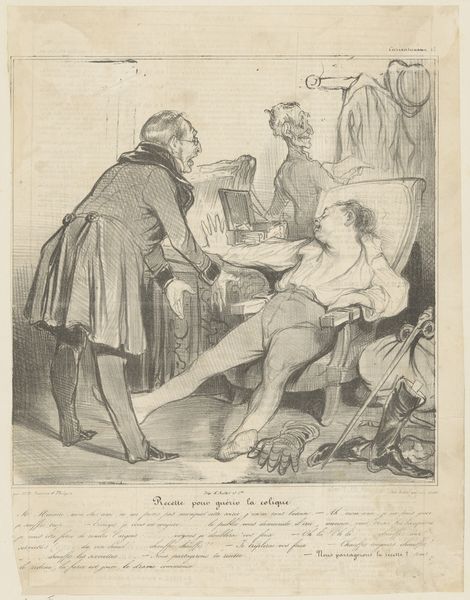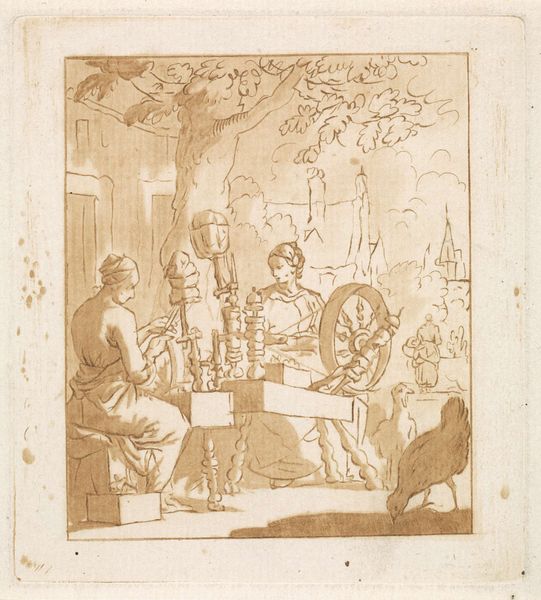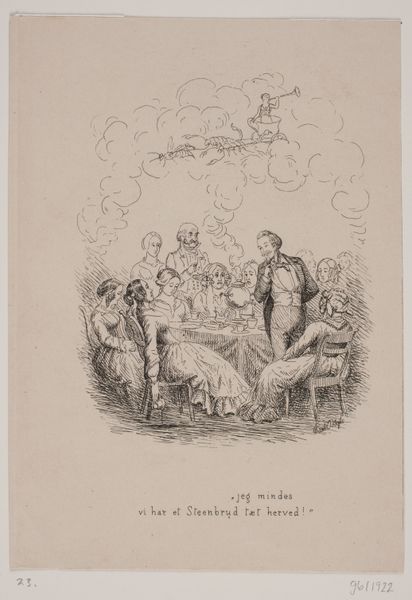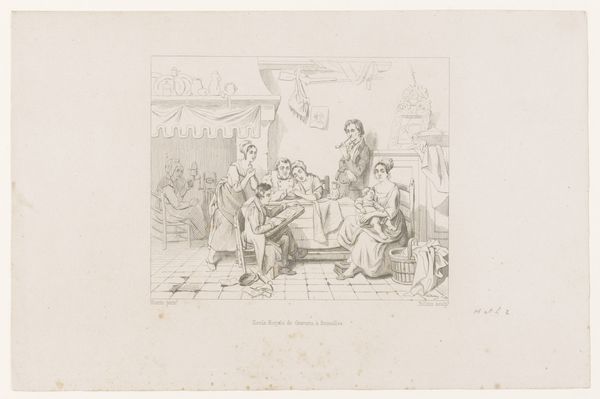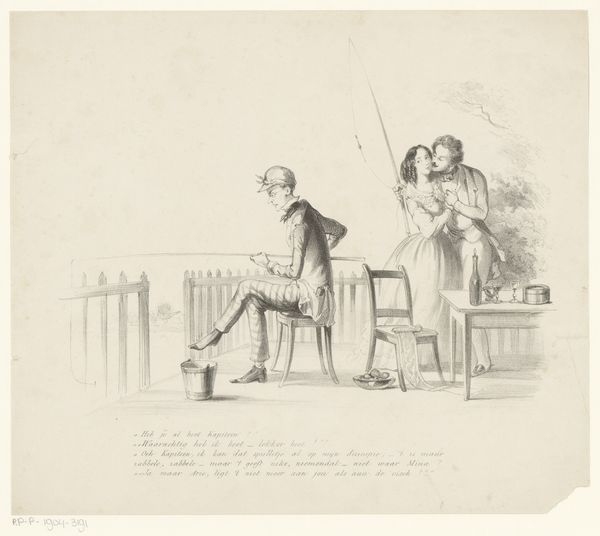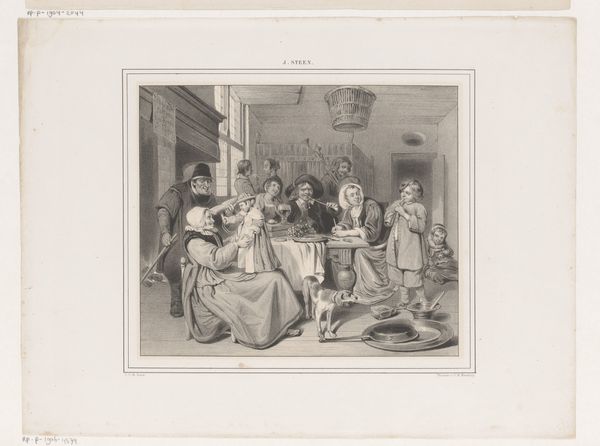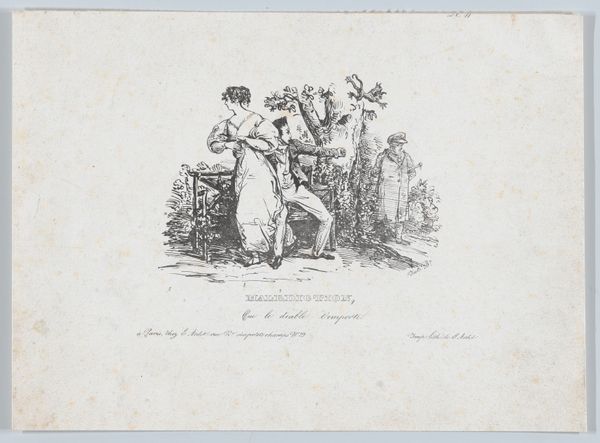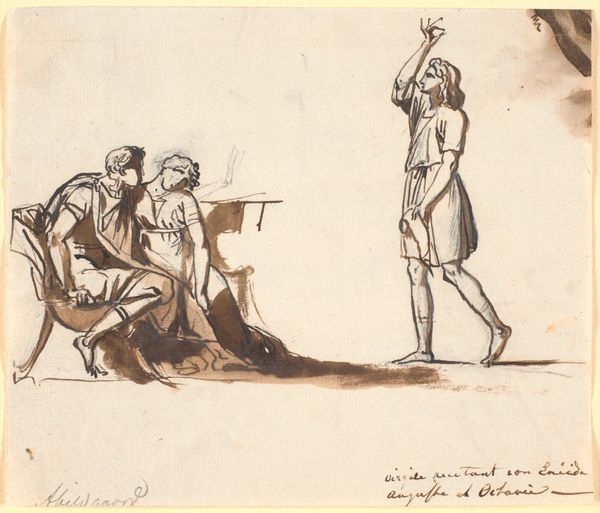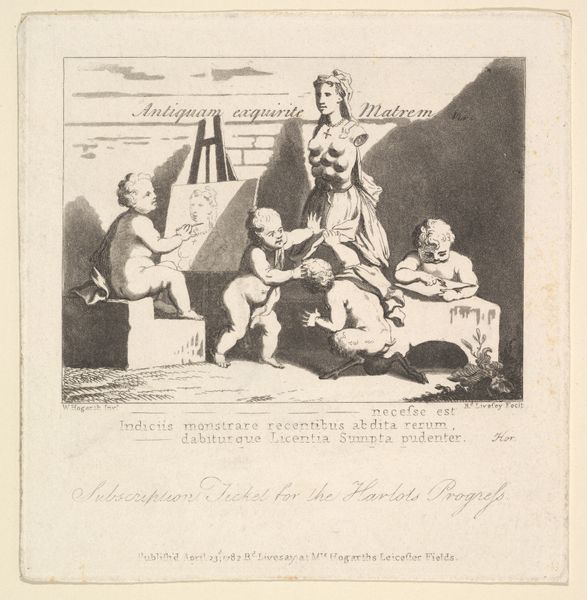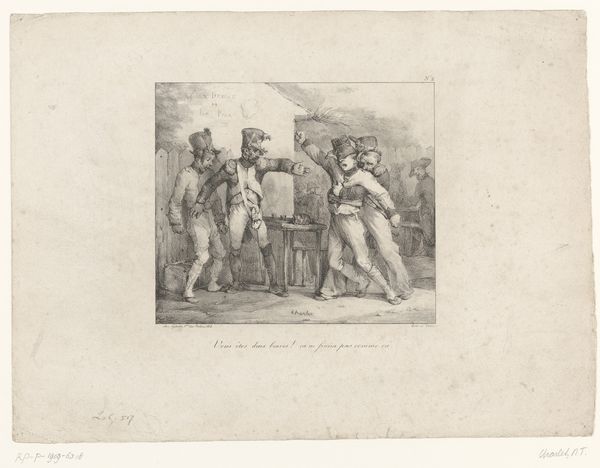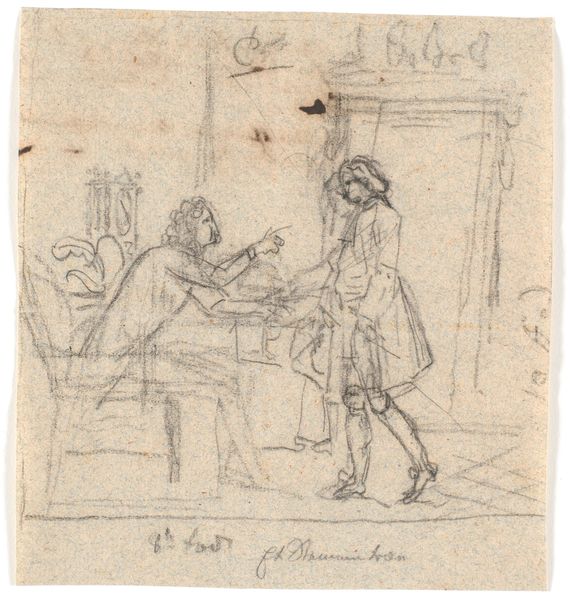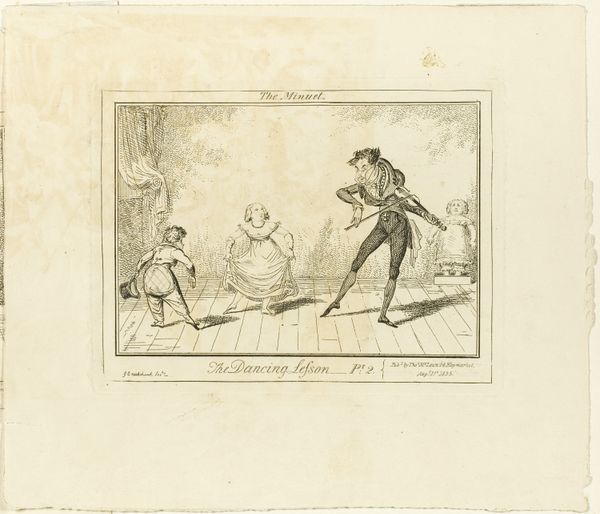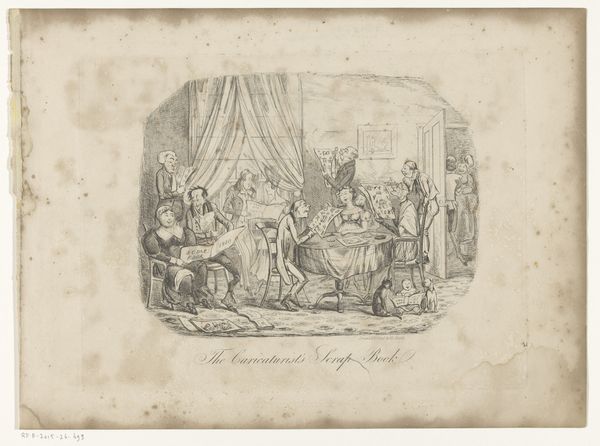
drawing, print, etching, paper, ink
#
drawing
#
narrative-art
# print
#
pen sketch
#
etching
#
paper
#
ink
#
romanticism
Dimensions: 305 × 420 mm (sheet)
Copyright: Public Domain
Curator: Here we have Franz Pforr’s etching from 1805, titled "Act 1, Scene 1 from Götz van Berlichingen". It depicts a scene from Goethe's play. Editor: It’s quite stark. All those thin lines etched in ink give the figures a skeletal look, despite the domestic setting. It feels unresolved and unsettling. Curator: The angularity definitely amplifies the emotional tension of the moment, though I suspect viewers contemporary with Pforr would also have felt an echo of Dürer in its symbolic language and medieval setting. The dogs in the foreground may indicate loyalty, perhaps? Editor: The etching, the ink on paper; it all speaks of a desire for repeatability, to circulate an idea, to make art more democratic. Was this artist also making prints as an accessible, saleable form of his work, making artwork available to a broader, more bourgeois audience? Curator: Absolutely. Prints at this time become vehicles for artistic dissemination, aligning with Romanticism’s aim to awaken folk memory and national identity. "Götz van Berlichingen" was a nationalistic work for Goethe, who became iconic; Pforr makes use of this symbolic language. Editor: Right. A play already so potent in its own right; combined with etching – it creates layered accessibility. A way for audiences far and wide to interpret themes from labor movements on themes relating feudalism. What does that mean in practice? Curator: The setting is quite simple, there isn’t a single layer or meaning. As the Industrial Revolution dawned, people questioned power hierarchies as it became essential for a healthy sense of identity. Here Pforr creates a dialogue between those histories. Editor: I appreciate how the materiality amplifies the themes, hinting at anxieties surrounding class. Looking again at Pforr’s lines, his emphasis on gesture, it becomes quite poignant when one considers that making prints democratizes artwork. Curator: So, despite its somber mood and minimalist use of ink, this piece actually represents great shifts that would only grow wider with time. Editor: Precisely, I am compelled by the interplay between process and narrative. Art's accessibility also means a shared viewing experience across disparate cultural groups.
Comments
No comments
Be the first to comment and join the conversation on the ultimate creative platform.
